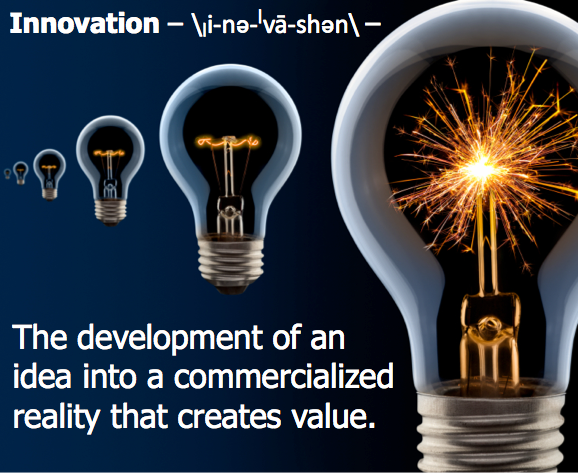 Some time ago I was asked to improve the new product development process at Kraft Foods. I call it the Idea to Market process… i2m™ for short. The assignment came from the top of the house who was feeling tremendous pressure to accelerate innovation to fuel earnings growth.
Some time ago I was asked to improve the new product development process at Kraft Foods. I call it the Idea to Market process… i2m™ for short. The assignment came from the top of the house who was feeling tremendous pressure to accelerate innovation to fuel earnings growth.
The CEO was primarily concerned with accelerating the process –cycle time reduction– to get new products to market faster.
The EVP in charge of operations wanted fewer commercialization startup problems and demanded detailed, failsafe process rigor; the antithesis of what the front end creatives wanted, by the way.
The EVP in charge of the business divisions and marketing was pushing for process simplification and less process for his marketing resources who felt mired in the minutia of forms and approvals and administrative details.
The EVP of R&D wanted a better process for setting priorities and allocating resources.
And the logistics and demand planning organization wanted more accurate volume projections.
Since it was a $45B global food company at the time and senior leaders owned over 1500 processes associated with i2m™, their list of improvement needs was very long.
So who’s needs should be served?
Before I answer that let me ask a question. Do you know what a keystone is? Look it up.
I don’t know what you would’ve done but I started by solving a problem they all shared that cut across all the issues. A sort of “keystone” change that could support all the other changes required.
Not a single senior leader I interviewed could speak to how many or what kinds of innovation projects were in the pipeline.
Turns out there were over 4000 projects consuming thousands of resources and very few of them were anything other than minor line extensions, flavor changes, or promotional initiatives.
Not much to move the earnings needle. Barely enough to slow the leaky revenue bucket.
These 4000 mostly minor initiatives were the primary cause of slow cycle time, commercialization problems, process complexity and administrative minutia, resource allocation confusion, volume forecasting hassle, and poor earnings growth.
So, I focused on providing tools and setting up simple gates at three points to create the visibility necessary for senior leaders to manage the i2m™ process.
(I realize the stage-gate process has come under fire and is considered an outdated, unnecessary approach. Others offer a ”new” approach that is supposedly unencumbered by stage-gates. This is all bogus mumbo-jumbo. Have you ever heard of Deming’s Plan-Do-Check-Act? All processes are stage-gate processes since every process has checkpoints of some kind. And that’s all a stage-gate process is… formalized checkpoints. No big deal. Just needs to be kept simple.)
Admittedly, this new found visibility into the process became a love-hate solution for the organization. For example, it uncovered numerous unsanctioned projects that were absorbing scarce resources. You can imagine who loved and who hated in that scenario.
It also uncovered things like the fact it took 14 signatures across 8 departments and 7 layers of the organization to get a label approved. (Surprisingly, there were a few that didn’t appreciate that revelation either.)
Improving i2m™ in your organization will always involve tradeoffs and conflict resolution. And some people will be happy with the changes while others will hate it. Fact of life.
But there’s almost always a keystone change that can pull most everything together. In some organizations like Kraft, it’s visibility. In others, simplification is the keystone. Still others will need something different. Finding out what that keystone is in your organization is more than half the battle.